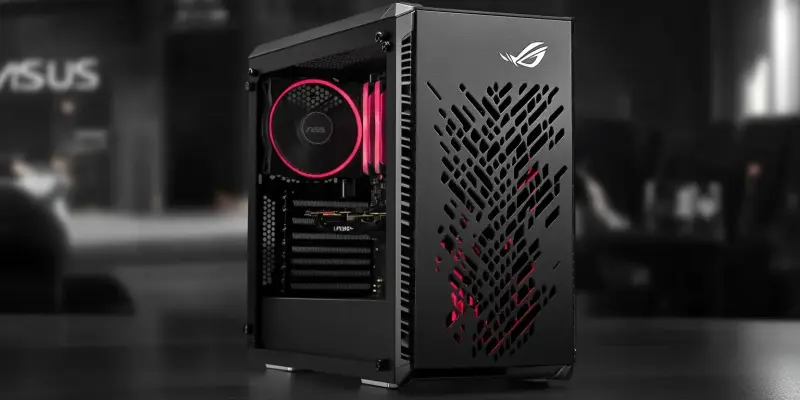ASUS has been pushing the boundaries of gaming technology, and it is about to raise the bar once again with its upcoming ROG NUC 2025. This highly anticipated miniature gaming powerhouse will integrate Intel’s latest Arrow Lake-H CPUs and NVIDIA’s next-generation “RTX 50” Blackwell gaming GPUs, offering gamers an unprecedented level of performance in a compact form factor. The ROG NUC systems have always been the go-to for compact, high-end gaming, and the 2025 model continues this tradition with impressive upgrades that promise an enhanced gaming experience.
Advanced Specifications and Design
The ASUS ROG NUC 2025 is expected to feature Intel’s Core Ultra 200H series processor, potentially the flagship Core Ultra 9 285H, paired with either an RTX 5060 or RTX 5070 GPU from NVIDIA. This marks a significant upgrade from last year’s model, which came with RTX 4060 and RTX 4070 GPUs. Such hardware enhancements inherently predict improved gaming performance, bringing more power to handle the latest and most demanding games. This next-gen CPU and GPU combination could significantly reduce latency and increase frame rates, delivering smoother gameplay.
Design-wise, the ROG NUC 2025 showcases a few notable changes. ASUS has introduced an additional fan on top to improve cooling, a feature absent in the 2024 edition. This suggests that the new model will be capable of maintaining optimal temperatures even during intense gaming sessions, ensuring longevity and reliable performance. The front panel has been reconfigured, now housing 2 USB Type-A ports, 1 USB Type-C port, an audio jack, and a power button. However, it is worth noting that the card reader present in the previous model has been excluded from this iteration.
Enhanced Gaming Performance and Potential Market Impact
The ROG NUC line, known for squeezing top-tier gaming performance into a small package, has been a favorite among gamers wanting power without the bulkiness of traditional gaming setups. With the inclusion of the RTX 50 series GPUs, the 2025 model is set to exceed these expectations, albeit potentially at a higher price. The previous flagship model retailed close to $2000 in China, and with the advanced specifications of the ROG NUC 2025, prices could very well rise. This increase may be attributed to the higher cost of next-gen GPUs, but gamers might find the upgraded performance worth the investment.
Another defining feature of the ROG NUC 2025 is its compact size, utilizing mobile platforms to deliver desktop-level gaming experiences. This makes it an ideal choice for gamers with limited space or those looking for a portable gaming setup without compromising on performance. Given ASUS’s reputation for quality and innovation, it is highly anticipated that the new model will maintain both durability and cutting-edge aesthetics. Despite not having an official release date yet, updates are expected during CES 2025, offering eager gamers a glimpse of what the future holds.
Future Prospects of Compact Gaming PCs
ASUS is set to elevate gaming technology once more with the introduction of its eagerly awaited ROG NUC 2025. This new miniature gaming titan will incorporate the cutting-edge Intel Arrow Lake-H CPUs, coupled with NVIDIA’s forthcoming “RTX 50” Blackwell GPUs. These advanced components promise gamers a remarkable level of performance encased in a highly compact design. Historically, ROG NUC systems have been synonymous with high-end, space-saving gaming solutions, and the 2025 model stands as a testament to this legacy. Boasting significant upgrades, the ROG NUC 2025 is designed to deliver an unparalleled gaming experience, pushing the envelope with innovations that enhance both gameplay and efficiency. This iteration continues ASUS’ commitment to merging powerful hardware with sleek, small-form architecture, making it a pivotal addition to any gamer’s arsenal. Whether you’re a casual player or a hardcore enthusiast, the ROG NUC 2025 aims to meet and exceed expectations, solidifying ASUS’s reputation at the forefront of gaming technology advancements.

